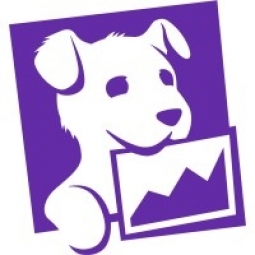Customer Company Size
Large Corporate
Region
- Europe
- Asia
- Middle East
Country
- Spain
Product
- Datadog Database Monitoring
- Datadog Application Performance Monitoring
- Datadog Infrastructure Monitoring
- Datadog Log Management
Tech Stack
- Microservices
- Database Management
Implementation Scale
- Enterprise-wide Deployment
Impact Metrics
- Cost Savings
- Productivity Improvements
- Customer Satisfaction
Technology Category
- Analytics & Modeling - Real Time Analytics
Applicable Industries
- Retail
- Food & Beverage
- Pharmaceuticals
Applicable Functions
- Logistics & Transportation
- Sales & Marketing
Use Cases
- Real-Time Location System (RTLS)
- Predictive Maintenance
- Supply Chain Visibility
Services
- Cloud Planning, Design & Implementation Services
- Data Science Services
About The Customer
Glovo is an on-demand courier service that purchases, picks up, and delivers products ordered through its mobile app. The company connects users with businesses and couriers offering on-demand services from local restaurants, grocers and supermarkets, pharmacies and retail stores. Operating in 25 countries across Europe, the Middle East and Asia, Glovo is a rapidly growing organization. The company initially designed its application using a monolithic architecture but to keep pace with rapid growth, Glovo engineers recently began migrating their application to a microservice-based architecture.
The Challenge
Glovo, an on-demand courier service operating in 25 countries, was facing a significant challenge as its database resource consumption couldn't keep pace with its projected growth. As the company launched a migration to microservices, it needed better visibility into its databases to reduce CPU usage and prevent costly downtime. With an increased number of databases and queries running, they found databases were provisioned incorrectly and would often reach CPU capacity. This resulted in outages adding up to three or four hours of downtime in 2022. The existing monitoring products Glovo used didn’t provide the insight they needed. Limited access to real-time monitoring and alerting hindered the team’s response to issues. They also lacked the ability to track and compare current and historical performance data, making investigations manual and tedious.
The Solution
Glovo was already using Datadog Application Performance Monitoring (APM), Infrastructure Monitoring, and Log Management. They decided to extend their existing observability tooling to Datadog Database Monitoring (DBM) as it had the same easy-to-use interface they were already familiar with as well as features like granular data of the queries, explain plans, query costs, wait times, etc. With Datadog DBM, Glovo engineers now have full visibility into their databases and can quickly identify and optimize inefficient queries to reduce computational load. Glovo is also using DBM for capacity planning and to enable resource optimization across the organization. For example, the infrastructure team supports other teams across the business in provisioning and maintaining their own infrastructure. DBM helps the infrastructure team work with other business areas to ensure their workloads run efficiently and resources are allocated appropriately, thereby reducing costs.
Operational Impact
Quantitative Benefit

Case Study missing?
Start adding your own!
Register with your work email and create a new case study profile for your business.
Related Case Studies.

Case Study
Case Study: Pfizer
Pfizer’s high-performance computing software and systems for worldwide research and development support large-scale data analysis, research projects, clinical analytics, and modeling. Pfizer’s computing services are used across the spectrum of research and development efforts, from the deep biological understanding of disease to the design of safe, efficacious therapeutic agents.

Case Study
The Kellogg Company
Kellogg keeps a close eye on its trade spend, analyzing large volumes of data and running complex simulations to predict which promotional activities will be the most effective. Kellogg needed to decrease the trade spend but its traditional relational database on premises could not keep up with the pace of demand.

Case Study
HEINEKEN Uses the Cloud to Reach 10.5 Million Consumers
For 2012 campaign, the Bond promotion, it planned to launch the campaign at the same time everywhere on the planet. That created unprecedented challenges for HEINEKEN—nowhere more so than in its technology operation. The primary digital content for the campaign was a 100-megabyte movie that had to play flawlessly for millions of viewers worldwide. After all, Bond never fails. No one was going to tolerate a technology failure that might bruise his brand.Previously, HEINEKEN had supported digital media at its outsourced datacenter. But that datacenter lacked the computing resources HEINEKEN needed, and building them—especially to support peak traffic that would total millions of simultaneous hits—would have been both time-consuming and expensive. Nor would it have provided the geographic reach that HEINEKEN needed to minimize latency worldwide.

Case Study
Improving Production Line Efficiency with Ethernet Micro RTU Controller
Moxa was asked to provide a connectivity solution for one of the world's leading cosmetics companies. This multinational corporation, with retail presence in 130 countries, 23 global braches, and over 66,000 employees, sought to improve the efficiency of their production process by migrating from manual monitoring to an automatic productivity monitoring system. The production line was being monitored by ABB Real-TPI, a factory information system that offers data collection and analysis to improve plant efficiency. Due to software limitations, the customer needed an OPC server and a corresponding I/O solution to collect data from additional sensor devices for the Real-TPI system. The goal is to enable the factory information system to more thoroughly collect data from every corner of the production line. This will improve its ability to measure Overall Equipment Effectiveness (OEE) and translate into increased production efficiencies. System Requirements • Instant status updates while still consuming minimal bandwidth to relieve strain on limited factory networks • Interoperable with ABB Real-TPI • Small form factor appropriate for deployment where space is scarce • Remote software management and configuration to simplify operations

Case Study
Energy Management System at Sugar Industry
The company wanted to use the information from the system to claim under the renewable energy certificate scheme. The benefit to the company under the renewable energy certificates is Rs 75 million a year. To enable the above, an end-to-end solution for load monitoring, consumption monitoring, online data monitoring, automatic meter data acquisition which can be exported to SAP and other applications is required.








